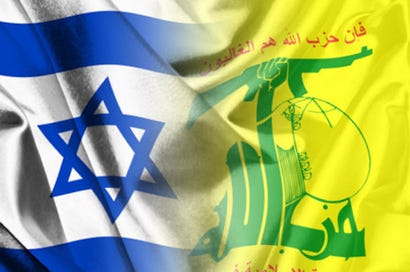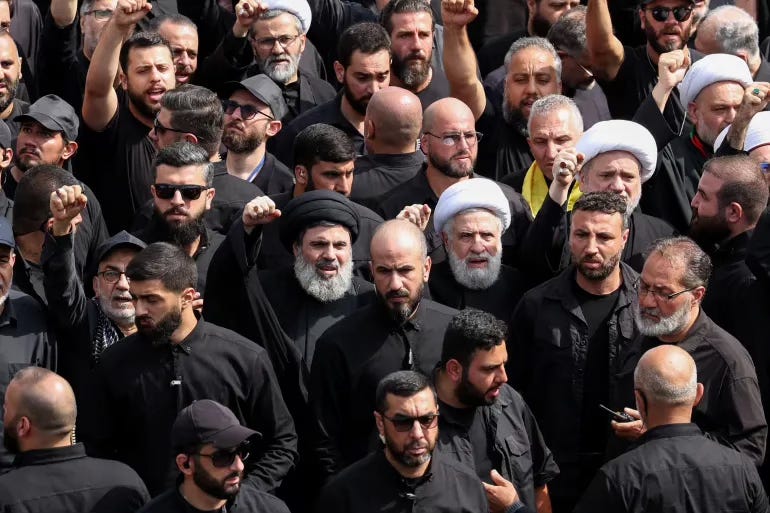As the dust settles on another day of bombardments in Lebanon, one thing becomes clear: Israel’s campaign against Hezbollah is far more than an air assault on military targets. The calculated targeting of Hezbollah’s strongholds in southern Beirut and the south is not simply a show of force; it is a multifaceted strategy aimed at reshaping the very fabric of Lebanon. The IDF appears to be leveraging the latent sectarian divisions in Lebanon as a tactical advantage, raising the question of whether this is a deliberate move to fracture Hezbollah’s support base and weaken its operational coherence.
Sectarian Strife: A Weapon in Plain Sight
Make no mistake, when Israeli airstrikes rain down on Hezbollah-controlled areas, they are not just targeting military assets; they are fanning the flames of sectarian strife. By forcing the displacement of thousands of Shia civilians, many of whom are now flooding into Sunni and Christian neighborhoods, Israel’s campaign is priming Lebanon for internal discord. This is a nation built on delicate sectarian balances, and any disruption could send shockwaves across its political and social structures.
Hezbollah, though a robust and experienced military entity, now faces a dual crisis. On one hand, it must manage the Israeli assault; on the other, it must maintain control over a civilian base that is rapidly becoming unsettled. The dislocation of Shia populations into areas historically aligned with other sectarian groups will undoubtedly strain Lebanon’s social fabric, and Hezbollah knows well that its political power is as fragile as the alliances holding the nation together. Should Hezbollah be forced to divert resources toward containing sectarian tensions, it will have less capacity to resist Israeli advances on the military front. This is not just an air campaign—it’s a psychological one, designed to divide Hezbollah’s attention and sap its strength.
The Buffer Zone: A Tactical Long Game
But sectarian strife is only half of the equation. Israel’s endgame in Lebanon clearly goes beyond pushing Hezbollah into chaos—it aims to establish a lasting buffer zone along the southern border. The history here is well-known. Israel has long sought to control southern Lebanon as a bulwark against rocket attacks and cross-border incursions. Yet, this time, the IDF’s strategy seems more refined, more surgical. It is not merely about occupation but about creating a space between Israel’s northern towns and Hezbollah’s operational reach, all while keeping Hezbollah too preoccupied internally to mount a coordinated response.
A limited ground invasion, though fraught with risk, seems increasingly likely. The Israeli strikes, aimed at decapitating Hezbollah’s leadership, have created an opening for such an operation. With Nasrallah and other senior commanders dead, Hezbollah’s command structure is undoubtedly weakened. This opens the door for a push into southern Lebanon, where the IDF could establish a buffer zone, securing Israeli towns from immediate threat while effectively cutting Hezbollah off from the border.
This is not just a tactical decision; it’s a strategic one. A buffer zone would not only neutralize the immediate military threat from Hezbollah but would also serve as a long-term deterrent, forcing Hezbollah to recalibrate its operations and perhaps even prompting a broader shift in its political focus. The IDF, by preying on Hezbollah’s internal distractions, could achieve a significant territorial gain with minimal sustained engagement. It is the embodiment of a strategic coup—securing Israeli interests while keeping its own military footprint light.
The Crippled Hezbollah: An Uncertain Future
Where does this leave Hezbollah? The group has weathered Israeli strikes before, but this time it finds itself in unfamiliar territory. With its leadership decimated, its ranks thinned, and its civilian base destabilized, Hezbollah may struggle to recover its operational strength in the near term. Iran, its long-time backer, may step in to fill the void, but even Tehran will find it difficult to rebuild Hezbollah’s shattered command structure quickly enough to stave off the coming Israeli moves.
Hezbollah, once the undisputed master of southern Lebanon, now faces a future in which its operational capabilities are severely hampered, its leadership fractured, and its political power tested by internal sectarian divisions. Israel, by targeting Hezbollah’s ability to fight on both military and social fronts, has placed the group in a vice from which it will be hard-pressed to escape.
Decapitation Beyond Lebanon: A New Israeli Doctrine?
The decapitation of Hezbollah’s leadership raises another crucial question: Will Israel extend this strategy to other proxies across the region? Hezbollah is not Iran’s only armed extension in the Middle East. Groups in Syria and Iraq, many of whom share similar structures and allegiances, may find themselves next on Israel’s list. The success of Israel’s campaign in Lebanon could embolden it to pursue a broader strategy of proxy decapitation, systematically dismantling Iran’s influence across the region.
This possibility is both tantalizing and dangerous. Should Israel begin targeting other proxies, it risks turning the conflict into a regional war, drawing in Iran and potentially destabilizing areas beyond Lebanon. Yet, the potential benefits for Israel are clear. By eliminating key figures in Iran’s proxy network, Israel could weaken Tehran’s hand in the region without engaging in direct conflict with the Iranian state. It’s a high-risk, high-reward strategy that could redefine the Middle East’s balance of power.
Final Note…
A Strategic Gamble with Long-Term Consequences
Israel’s actions in Lebanon are more than a response to provocations; they are a carefully orchestrated campaign aimed at achieving both immediate military gains and long-term strategic advantages. By stoking sectarian tensions, Israel is not just weakening Hezbollah militarily—it is undermining its very foundation in Lebanese society. And with the prospect of a buffer zone in southern Lebanon, Israel is positioning itself to secure a lasting security advantage, one that may shift the regional balance for years to come.
However, the risks are profound. A fractured Lebanon, beset by sectarian violence and crippled by external forces, could become a breeding ground for further instability. Hezbollah, though wounded, is far from defeated, and a regional escalation remains a very real possibility.
As the world watches, Israel’s tactical brilliance must be weighed against the broader regional implications. Will this operation bring the lasting security Israel seeks, or will it ignite new fires that burn far beyond Lebanon’s borders?








